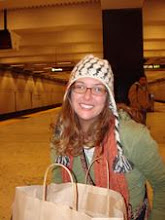

Madang Province is on the north coast of PNG. The province is 29,000 square km in size and has a population of approximately 300,000. The provincial centre is the town of Madang, which has a population of approximately 35,000.
The coastal climate is very sunny but hot and humid. The average daily temperature is 32 °C during the day and 23°C at night. The province has a monsoon type climate with a high annual rainfall, which fortunately tends to fall mainly at night.
Madang Province is one of the most geographically diverse provinces in the country, with a relatively unspoilt coastline and forested lowlands and mountainous interior. Madang town itself has a coral coastline and does not have any beaches. However, the surrounding area and islands are dotted with beautiful lagoons, coral reefs, sand beaches and mangrove forests. The province has four mountain ranges running through it and along its borders and there are three large volcanic islands. The volcano on Manam Island erupted most recently in 2005, which resulted in the evacuation of the greater majority of the inhabitants. They have been temporarily settled on the mainland close to Bogia. The valley of the upper Ramu is a fault zone and earthquakes in this region and the neighbouring Finisterre ranges are quite common. The last major one was in 1993.
The Madang Province is divided into six administrative districts; Madang District, Sumkar District, Bogia District, Rai Coast District and the Middle Ramu District.
Madang town: The Lonely Planet 2005 edition names Madang town as the ‘the prettiest town in the Pacific’. Many volunteers think it has a fantastic coastal location and there are beautiful spots in and around the town, although the town itself is fairly run down, the buildings functional, and the roads can be potholed and dusty.
Madang is the most linguistically diverse province of PNG, which is itself an incredibly linguistically diverse area. There are more than 175 separate languages found amongst the peoples of Madang Province. The cultures of these different communities are also incredibly diverse. This can be seen today in the different lifestyles, customs and traditional dances (called singsings in Tok Pisin), which the people still practice although many aspects of culture are changing rapidly.
Not surprisingly given the diverse geography of the province the people themselves live a variety of different lifestyles. There are many islanders and coastal people who live by sea fishing off outrigger canoes and by the subsistence farming of taro and yams. They live in coastal villages of palm-thatched houses built on stilts. Inland the people of the lowland forests practice shifting cultivation, also of yams and taros, and along the Ramu River and its tributaries there are communities that depend on harvesting sago as their main staple and also catch fish from dugout canoes.
Although the majority of Madang Province’s people still rely mainly on subsistence agriculture there are very few who do not have some involvement in the formal economic sector. Madang Province is the country’s second largest producer of copra (dried coconut meat) and there are many plantations and smallholder stands owned by companies and local people along the coast and around Karkar Island. Cocoa is often grown mixed in with the lines of coconut palms and in the mountains there are small holders who grow fine arabica coffee. In terms of livestock, cattle are grazed on the extensive grasslands of the upper Ramu valley and to a lesser extent elsewhere in the province.
There are several logging operations in the province; including the Japanese JANT company, a Malaysian company in the Madang District, a Korean company in the Rai Coast District, and another Malaysian operation in the Bogia District. Timber extraction in all of these areas has fortunately slowed down at the time of writing due to a fall in the price of logs on the world market.
The province is also the base of Ramu Sugar that is a nationally owned company, a fish cannery, the James Barnes meat cannery and the Wills Cigarette Factory right in the centre of town.
Because of the great beauty of Madang Province and Madang town in particular the area has always been a favourite with tourists, although the numbers of tourists visiting PNG is still very small. There are six large hotels in and around Madang town, and the tourist industry employs a moderate workforce.







1 comment:
Very well explained 👏 👌 well done 👍❤️💯
Post a Comment